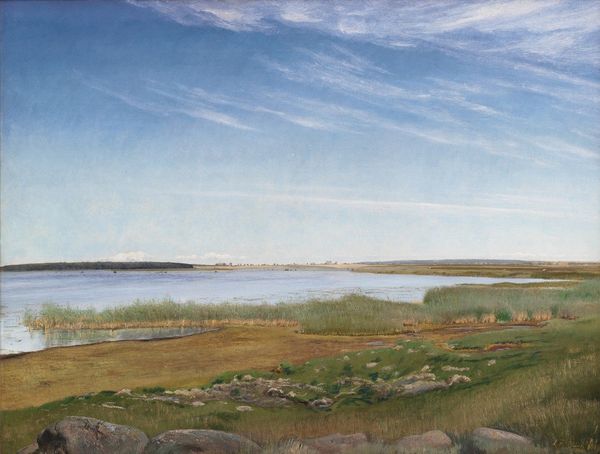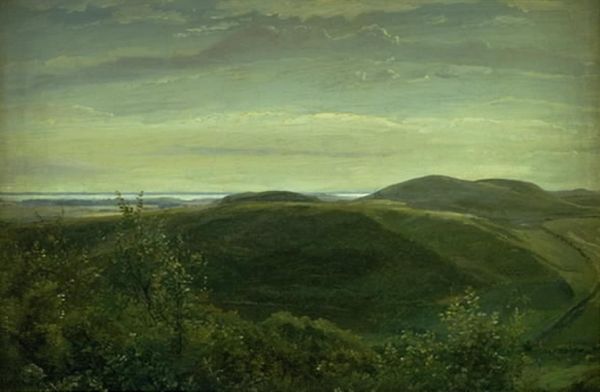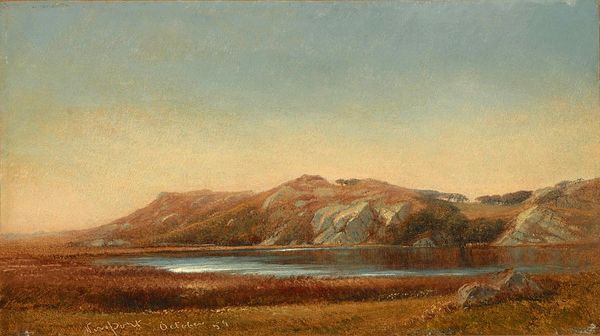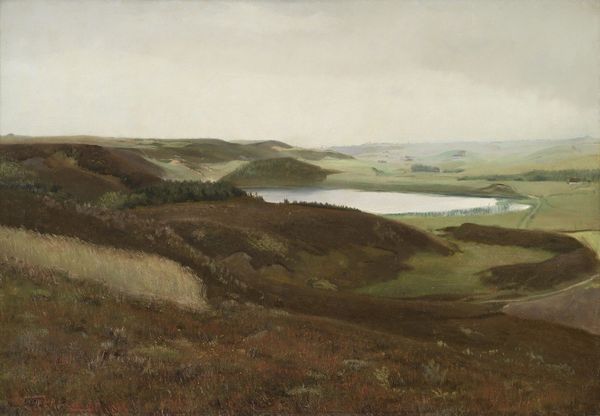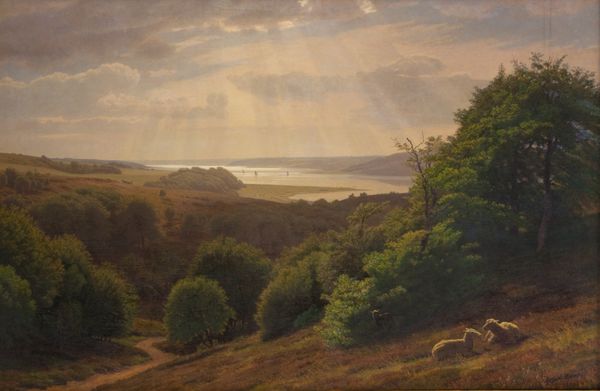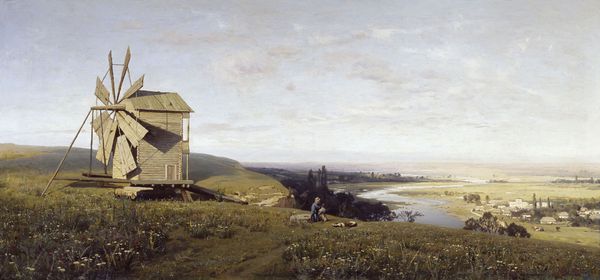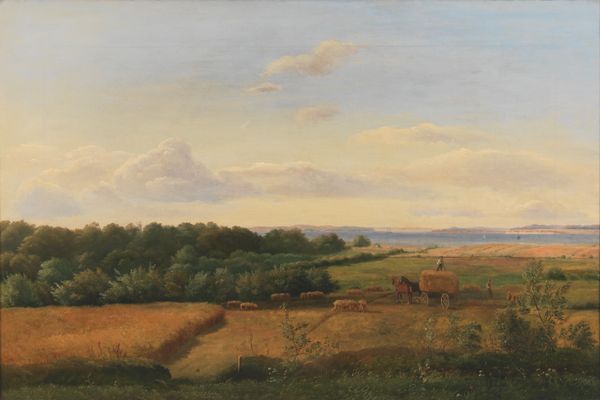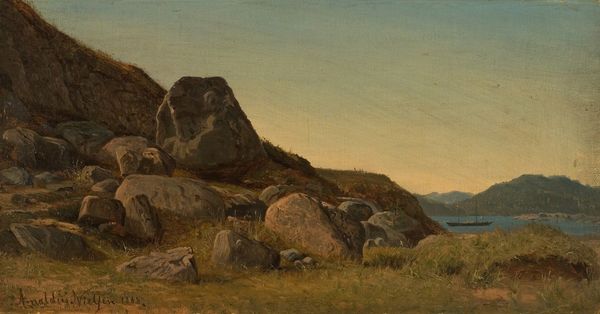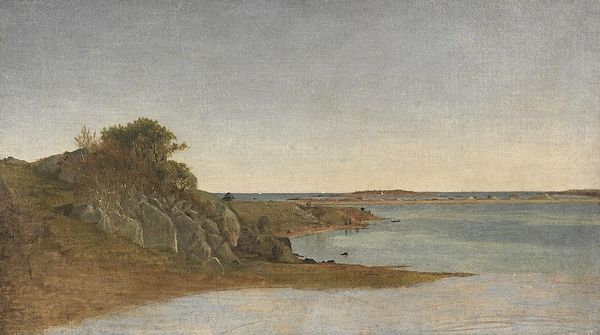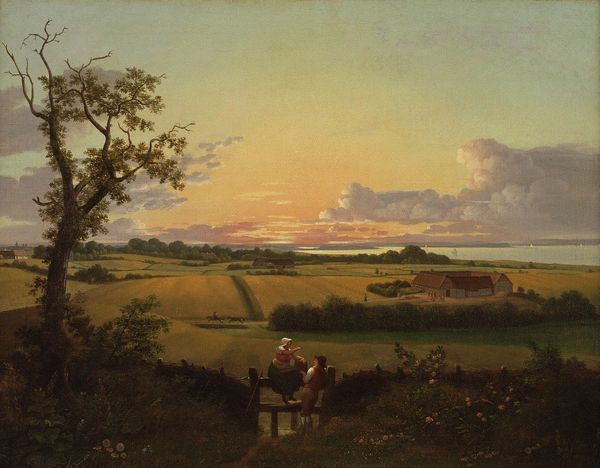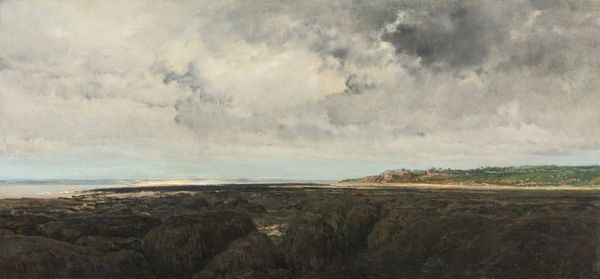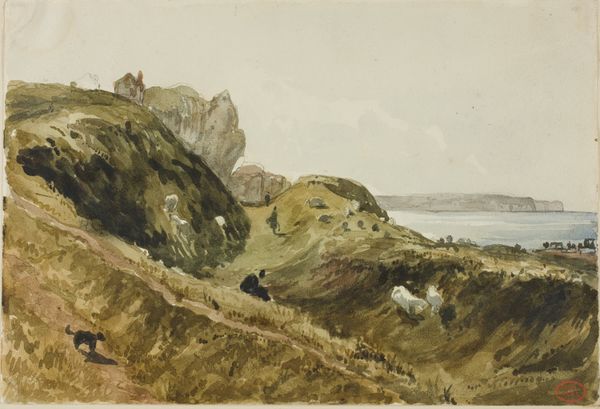
painting, plein-air, oil-paint
#
painting
#
plein-air
#
oil-paint
#
landscape
#
hudson-river-school
#
watercolor
#
realism
Copyright: Public domain
Editor: Looking at “Almys Pond Newport,” an oil painting, it has this strikingly tranquil atmosphere. There's such clarity and a calm luminosity about the scene; three cows in the tall grass seem at peace in nature. I’m curious about its cultural relevance, what can you tell me about the work? Curator: Well, considering the context of its time, likely mid-19th century and associated with the Hudson River School, this painting presents an interesting study in the development of American landscape painting. While seemingly straightforward in its depiction, how do you think Kensett's portrayal of nature speaks to the broader cultural narratives? Editor: Hmmm. Is it just as simple as this celebrates nature? Or is it an idealistic vision? Curator: Indeed, that is the main reading. These landscapes offered a visual articulation of the concept of Manifest Destiny. They visualized the idea of humans within an abundant and divine providence in the mid-19th Century. They encouraged people to spread west. They were powerful instruments of ideological reinforcement. The calm light of Kensett can thus be said to work on this dimension, creating confidence. Do you notice any subtle visual cues that may emphasize such sentiment? Editor: It might be the muted colors that contribute to its subtle messaging? They instill this serenity and calm rather than a feeling of some monumental and raw beauty? Curator: Precisely, which points to a sophisticated public messaging at play. I learned to observe that landscapes should not be simply viewed, they are also cultural products. Editor: I now realize landscapes may carry deeper meanings! Thanks for shedding light on the painting’s cultural and historical significance.
Comments
No comments
Be the first to comment and join the conversation on the ultimate creative platform.

